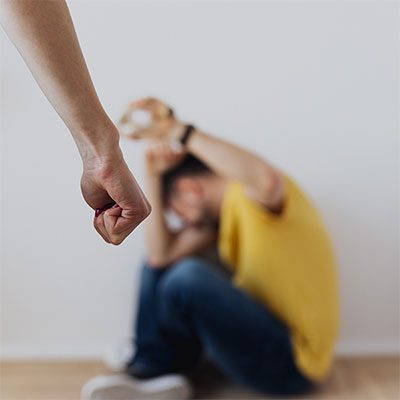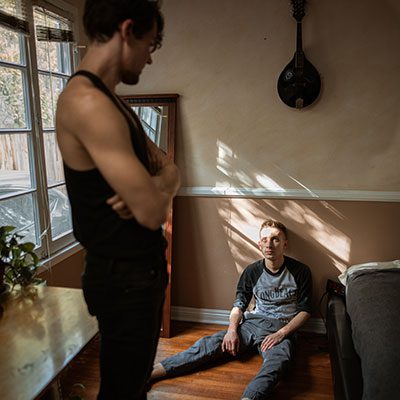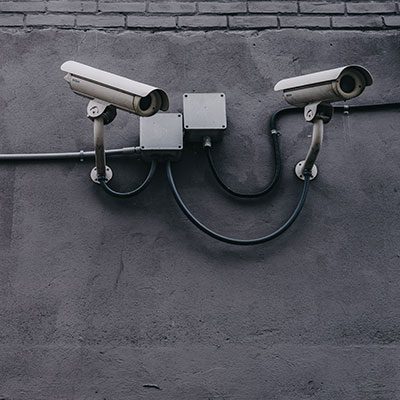Domestic abuse is a pattern of coercive, controlling behavior that is a pervasive life-threatening crime affecting people in all our communities regardless of gender, age, sexual orientation, race, ethnicity, religion, social standing and immigration status.
Abuse is not love. It is one person in a relationship having power and control over the other person.
Domestic violence takes many forms: physical; emotional; economic; stalking and harassment; and sexual.

Physical abuse does not always leave marks or cause permanent damage:


Emotional/psychological abuse is a behavior your partner uses to control you or damage your emotional well-being. It can be verbal or non-verbal:



Economic/financial abuse happens when the abuser makes a victim entirely financially dependent on the abuser, with no power or say in the relationship:


Stalking and harassment can happen between strangers or in relationships, where the abusive partner or ex demands your time even after you make it clear you do not want contact:


The cycle of abuse describes the pattern of abusive behavior in a relationship. Though the pattern may be slightly different for each couple, the cycle of domestic abuse remains roughly the same whether the abuser is a significant other, parent, family member or friend.
This cycle can play out over and over in an abusive relationship. Sometimes you may move through the entire cycle in as little as a few hours or as many as a few months. However, without help from outside resources, this cycle will continue to repeat as long as you remain in the relationship.
The honeymoon period occurs right after an instance of physical, sexual or emotional abuse. During this time, an abuser will apologize for their behavior while showing sorrow and promising that the abuse will never happen again. They may also place blame on the victim for the episode of abuse or act like the abuse never happened.
An abuser may express love through gifts and statements during the honeymoon period. Both the abuser and the victim may believe that their relationship is now stable and safe, that all abuse is over and will never happen again. This part of the cycle of abuse can make it more difficult for a victim to leave the relationship.
When the honeymoon period ends, tension will start to build in the relationship. An abuser may start getting angry again and making difficult demands. They may start breaking promises they made in the honeymoon phase and stop expressing love or affection.
The victim may start to fear for his or her safety and give in to the abuser’s requests. The victim may be extremely careful about what they say or do as tension is building.
Finally, the tension is too much, and the abuser commits an act of abuse. Abuse make range from physical abuse like hitting to emotional abuse such as name-calling and humiliation. The goal of abuse is always to gain power and control over the victim using any means necessary.
It’s important to remember that physical harm is not the only type of abuse. The abuse can take a variety of forms, including, but not limited to:
Once the abuser feels more in control, the relationship may enter the honeymoon period again. Over time, abuse can become more and more intense and skip the honeymoon period altogether.
Understanding the cycle of abuse can help you break the cycle. You can begin to recognize the pattern of abuse in your relationship and take steps to leave the relationship while staying safe.
What is the difference between healthy, unhealthy and abusive relationships?
Some warning signs of abuse in the home or in a relationship include:
Why doesn’t she just leave? It’s the question many people ask when they learn that a woman is suffering battery and abuse. But if you are in an abusive relationship, you know that it’s not that simple. Ending a significant relationship is never easy. It’s even harder when you’ve been isolated from your family and friends, psychologically beaten down, financially controlled, and physically threatened.
If you’re trying to decide whether to stay or leave, you may be feeling confused, uncertain, frightened, and torn. Maybe you’re still hoping that your situation will change or you’re afraid of how your partner will react if he discovers that you’re trying to leave. One moment, you may desperately want to get away, and the next, you may want to hang on to the relationship. Maybe you even blame yourself for the abuse or feel weak and embarrassed because you’ve stuck around in spite of it. Don’t be trapped by confusion, guilt, or self-blame. The only thing that matters is your safety.
If you are being abused, remember:
As you face the decision to either end the abusive relationship or try to save it, keep the following things in mind:
If you’re hoping your abusive partner will change… The abuse will probably keep happening. Abusers have deep emotional and psychological problems. While change is not impossible, it isn’t quick or easy. And change can only happen once your abuser takes full responsibility for his behavior, seeks professional treatment, and stops blaming you, his unhappy childhood, stress, work, his drinking, or his temper.
If you believe you can help your abuser… It’s only natural that you want to help your partner. You may think you’re the only one who understands him or that it’s your responsibility to fix his problems. But the truth is that by staying and accepting repeated abuse, you’re reinforcing and enabling the behavior. Instead of helping your abuser, you’re perpetuating the problem.
If your partner has promised to stop the abuse… When facing consequences, abusers often plead for another chance, beg for forgiveness, and promise to change. They may even mean what they say in the moment, but their true goal is to stay in control and keep you from leaving. Most of the time, they quickly return to their abusive behavior once you’ve forgiven them and they’re no longer worried that you’ll leave.
If your partner is in counseling or a program for batterers… Even if your partner is in counseling, there is no guarantee that he’ll change. Many abusers who go through counseling continue to be violent, abusive, and controlling. If your partner has stopped minimizing the problem or making excuses, that’s a good sign. But you still need to make your decision based on who he is now, not the man you hope he will become.
If you’re worried about what will happen if you leave… You may be afraid of what your abusive partner will do, where you’ll go, or how you’ll support yourself or your children. But don’t let fear of the unknown keep you in a dangerous, unhealthy situation.
Your first line of defense is to always demand that the abusive and violent behavior stop. This may sound obvious but many victims believe that they don’t deserve to be treated with respect and therefore don’t demand it. The next step may be to get a restraining order or protective order against your abusive partner. However, remember that the police can enforce a restraining order only if someone violates it, and then only if someone reports the violation. This means that you must be endangered in some way for the police to step in.
If and when you are ready to stop the violence, here are some additional suggestions:
Each person’s experience in an abusive relationship is different, and sometimes it can be difficult to tell the difference between a relationship that is challenging or unhealthy, and a relationship where one person is abusing another. Often, domestic violence is not easy to spot even if you know the person well. Abuse that doesn’t leave physical marks or injuries can be especially difficult to recognize. Even if the person is being physically hurt, these injuries are not always evident if they are covered by clothing or make-up. It is not uncommon for an abuser to behave very differently in other relationships and settings, and also many survivors acknowledge that they did not think of their experiences as abuse.
If they have recognized that they are experiencing domestic violence, they may not tell anyone for a variety of reasons: the abuser may have threatened to harm the person, or others, if they tell anyone; they may worry about getting other people involved; or they may feel ashamed that they have experienced domestic violence. Sometimes, friends, relatives, neighbors and colleagues feel that something is wrong but are not sure what the problem is.
Below are things you may notice that could indicate that the person you know is experiencing domestic violence:
Approach your friend or relative in a sensitive way, letting them know your concerns. Don’t be surprised if they seem defensive, dismissive, or reject your support. They might be worried about burdening you with their situation if they tell you about the abuse. They may not be ready to admit to being abused, or may feel ashamed and afraid of talking about it. They might have difficulty trusting anyone after being abused. They may feel embarrassed or ashamed to talk about the abuse. And they may feel like if they love their partner enough, they can save their relationship.
Don’t push the person into talking if they are uncomfortable, but let them know that you’re there if they need to talk. Be patient and keep an ear out for anything that indicates they are ready to talk about their experiences. If the person starts to talk about the abuse, listen with an open mind, compassion, and a supportive attitude, even if you don’t agree with what the person is saying. It can be difficult not to offer opinions about the relationship or their partner, to criticise or to blame. However, this response may decrease their openness and the likelihood that they will be open to your support.
Below are three strategies that will show your willingness to show up and support someone. You don’t need to be an expert or have all the answers. Survivors tell us that having support where someone can just be there and be available is most helpful.
Tip #1: Ask a Question
Asking “How’s it going?” and really caring about the answer is powerful.
Some other possible questions to ask:
Tip #2: Listen Up
Really listen. Listen without having your own agenda. Being heard helps others feel seen and understood. Acknowledgment of their experience as real and valid makes all the difference.
Things you can say to people who have experienced harm:
When you’re listening deeply to someone, you are not trying to assert your opinion, you are trying to hear and understand their perspective.
You’re also listening for what the person thinks about risks, priorities, and concerns. Bottom line: you are listening to hear what the person is experiencing, what they want, and how you can help.
Starting to feel worried? If you’re hearing something (they’re isolated, being monitored or stalked, the person has a weapon) that makes you concerned they are in danger, you (or both of you together) can call the UDVC Linkline OR National Domestic Violence Hotline to come up with a plan to stay as safe as possible. If there are concerns about immediate danger and they are unable to flee, call 911.
Red flags that indicate a potential for greater risk:
Tip #3: Stay Connected
It can take a long time for things to get better, and it can be difficult to hang in there through this journey. But staying connected is one of the most helpful things you can do. When someone is isolated, the abuser has far more power and control over their lives. You do not need to know all the answers or agree with every decision to be helpful. Instead, consistently show up, take on what you can, and ask for help with things that are difficult for you.
Connection also means no ultimatums. We’ve learned that tough love is not what people respond well to. You might be the only person they are reaching out to. If you give them an ultimatum that they can’t live up to, they won’t have anyone left. Instead, try to leave the door open to make it easy to keep coming back to you.
Even if the person you’re concerned about doesn’t reach out, you can be the one to take the first step by reaching out. This can be a lifeline for your loved one. They may not be calling or reaching out because they cannot, not because they don’t want to or don’t need support.
That said, we know that it’s really hard to stay connected when you’re worried and scared, and unsure how to help someone you care about. But it is not helpful to sacrifice your own well-being in the hopes of helping someone else. If you need help, talk to your trusted supports and reach out to experts when needed. If you need to take a break, take it.
No one deserves to be abused. Our hope is that if you are being abused, you will be able to find a way to safely get out of the abusive relationship. However, the reality is that for many different reasons, some victims are not able to leave an abusive relationship once the abuse begins. If you’re in a physically abusive relationship, please consider the following tips to help try to keep you and your children safe until the time comes when you are able to leave.
Following these suggestions (often known as a safety plan) can’t guarantee your safety, but it could help make you safer. However, it is important that you create a safety plan that is right for you. Not all of these suggestions will work for everyone, and some could even place you in greater danger. You have to do what you think is best to keep yourself and your children safe.
No one deserves to be abused. If you are in an abusive relationship, and you feel that you would like to leave the abuser, here are some tips to help keep you as safe as possible when preparing to leave.
Hide this bag somewhere the abuser will not find it. Try to keep it at the home of a trusted friend or neighbor. Avoid using next-door neighbors, close family members, or mutual friends, as the abuser might be more likely to find it there. If you’re in an emergency and need to get out right away, don’t worry about gathering these things. While they’re helpful to have, getting out safely should come first.
If you plan on taking your children with you when you leave, it is generally best to talk to a lawyer who specializes in domestic violence and custody issues beforehand to make sure that you are not in danger of violating any court custody order you may have or any criminal parental kidnapping laws. This is especially true if you want to leave the state with the children.
If you are considering leaving without your children, please talk to a lawyer who specializes in custody before doing this. Leaving your children with an abuser may negatively affect your chances of getting custody of them in court later on.
If you are fleeing to a confidential location and you fear that the abuser will go looking for you, you might want to create a false trail after you leave. For example, you could call motels, real estate agencies, schools, etc., in a town at least six hours away from where you plan to go and ask them questions that will require them to call you back. Give them your old phone number (the number at the home you shared with the abuser, not the number to the place you are going). However, do not make these phone calls before you leave. If anyone calls you back while you are still with the abuser, or if the abuser is able to check your phone to see what numbers you have called, the abuser would be tipped off that you are preparing to leave, which could put you in great danger.
After you have left an abusive relationship, there may be many occasions where you will have to see the abuser in court to deal with a protection order, custody, child support, divorce, or criminal proceedings. Since you are in a courthouse surrounded by people and even court officers, you may feel like it is okay to let your guard down. However, please remember that any time you come into contact with the abuser, you have to take steps to protect yourself. Here are some tips to help keep you as safe as possible.
Following these suggestions (often known as a safety plan) can’t guarantee your safety, but it could help make you safer. However, it is important that you create a safety plan that is right for you. Not all of these suggestions will work for everyone, and some could even place you in greater danger. You have to do what you think is best to keep yourself and your children safe.



Here are some things you can do to try to stay safe online.
It’s good practice to assume that anything you put on the Internet can be seen. However, even information that you have not entered into a website yourself can show up on the Internet – for example, if you have a magazine subscription or if you donate to a political campaign, your personal information can be accessed on the Internet. Despite privacy settings, computer hackers and computer spyware can potentially access your information.
A good test to find out how searchable you are on the Internet is to search your own name (using a search engine such as Google) and see what comes up. If you have a common name, try modifying your search by including some basic information like your city or high school. If you find articles or images about yourself, you may try to contact the administrator of the website and ask that s/he remove them although there is no guarantee that the website administrator will honor your request.
Lake County’s ONLY domestic violence shelter is the ideal place for survivors from across Northeast Ohio to heal from the trauma of abuse and rebuild their lives.
Forbes House is open 24 hours a day, seven days a week.